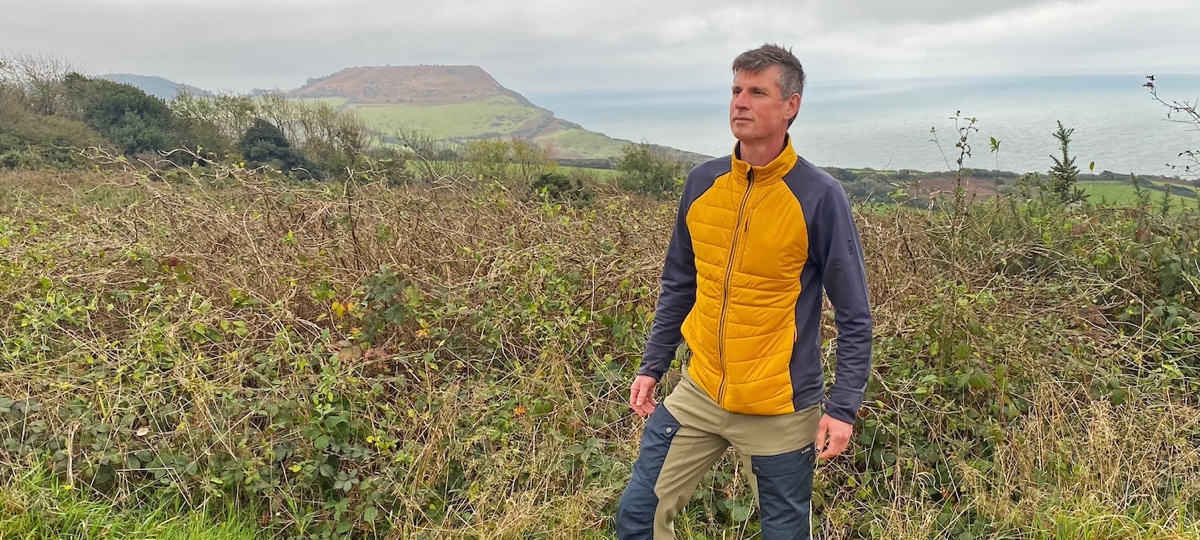Advnture Verdict
This is a really innovative and toasty warm mid layer, with excellent features, which can also be used as a good-looking outer jacket when conditions are dry. It packs some serious thermal power, thanks to the wool fill employed in the baffled puffy section on the front of the jacket. While this does leave your back a little exposed to chilly winds, it’s a top designed for wearing during active pursuits, when having breathable (and stretchy) back and side panels is more important.
Pros
- +
Warm, with zoned thermal protection
- +
Breathable
- +
Stretchy
- +
Durable
- +
Good thumb loops
- +
Made with recycled content
Cons
- -
Not water resistant
- -
No insulation on the back
- -
No way of tightening the hem
- -
Not all material recycled
You can trust Advnture
Smartwool Smartloft Jacket: first impressions
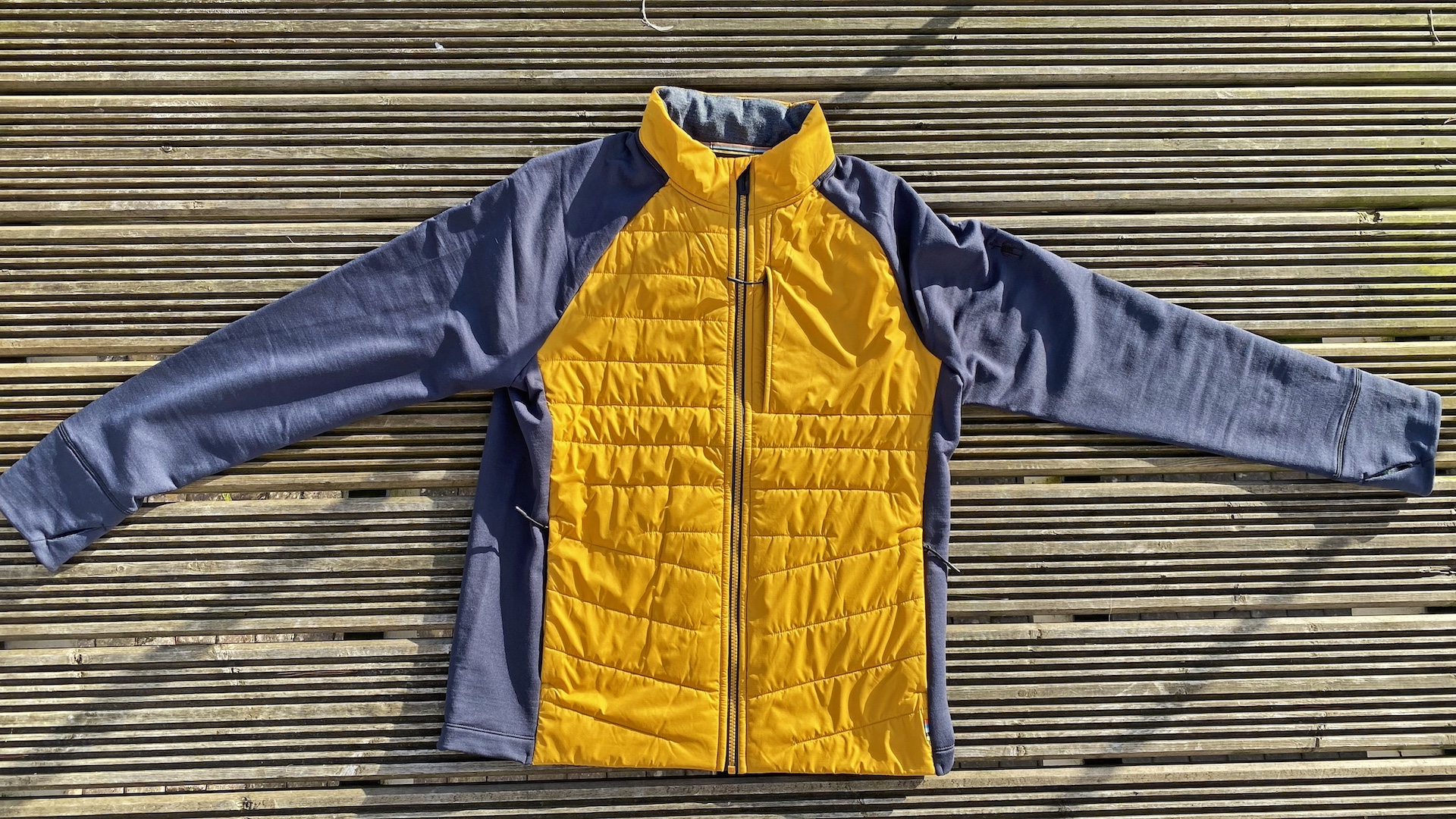
I loved the look and feel of the Smartwool Smartloft Jacket as soon as I got my hands on it, but it’s one of those products that’s very difficult to accurately categorize. Is it a fleece? No, not really. A puffer jacket? Nope, it’s not exactly one of those either. In terms of style and performance, it lies somewhere in the middle of the two, but it’s not made from fleece material, nor is it stuffed with synthetic fill like many puffers, and it definitely doesn’t contain duck or goose feathers, so it’s certainly not a down jacket. It’s a solid mid layer, though, which also works as a stand-alone outer garment, and I guess the best way to describe it is as a softshell.
Does any of this matter? Not a jot, so long as it works, then it is entirely irrelevant what exact genre it fits into.
Smartwool Smartloft Jacket: design and materials
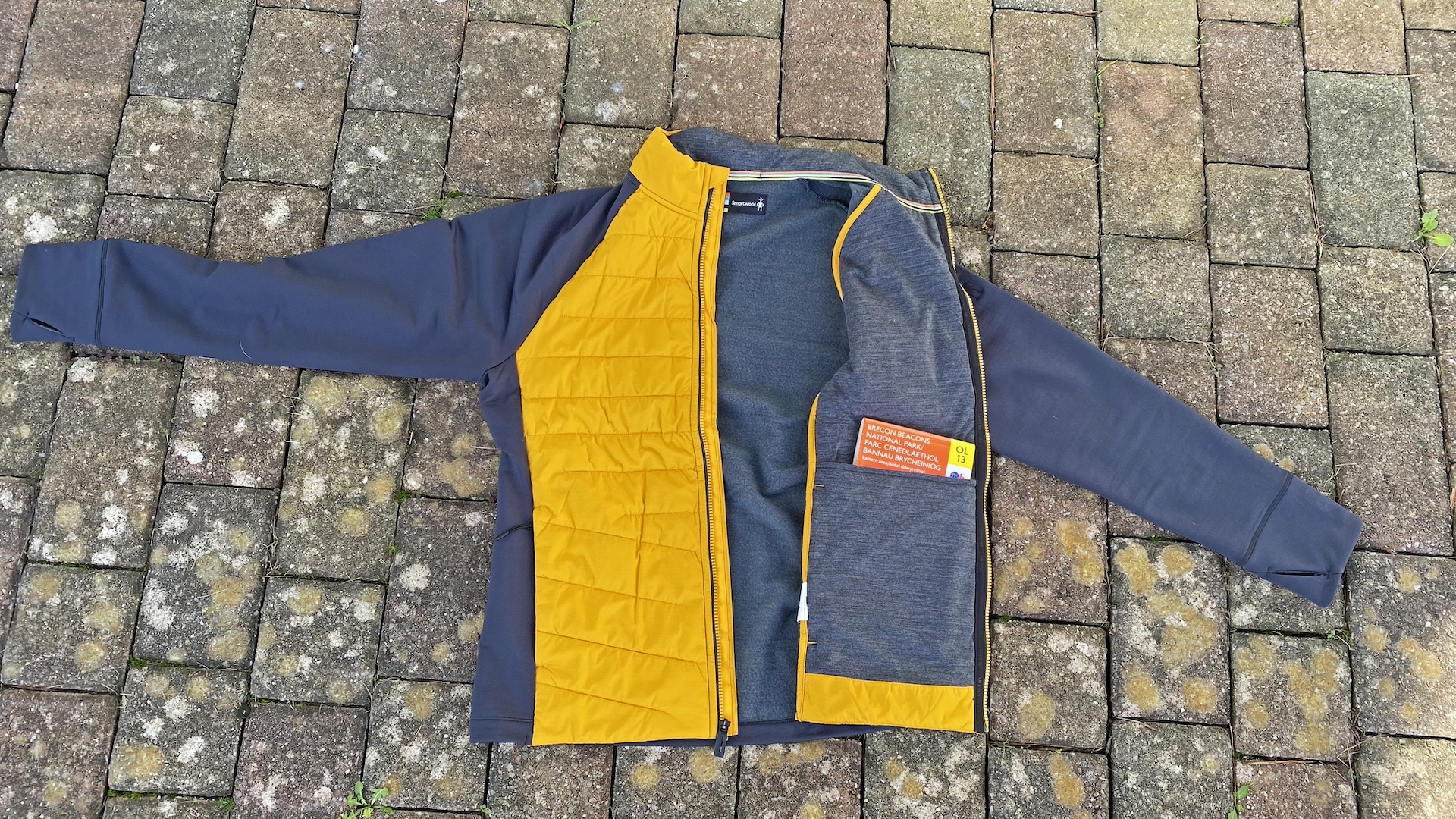
Now we’ve established what the Smartwool Smartloft Jacket isn’t, let’s pop the lid up and see what does provide the puffy power behind the impressive thermo performance of this garment.
• List price: $210 (US) / £190 (UK) / €200 (EU)
• Fabric: 100% nylon (shell); 47% polyester, 38% Merino wool, 15% elastane (main body); 56% Merino wool, 44% polyester (lining); 50% recycled wool, 38% wool, 12% polyester (fill)
• Gender availability: Men’s / Women’s
• Sizes: XS-XL
• Weight (men’s large): 485g / 17oz
• Colors: Winter Moss / Black / Honey Gold / Currant (men's); Eggplant / Arctic Green / Twilight Blue / Black / Almond (women's)
• Best for: Hiking, trekking, backpacking, climbing, camping
This is a Smartwool product, so it's no surprise that Merino wool features pretty large in the ingredients of the jacket. The main body (the back and side panels, and the sleeves) are made from a rich mix of Merino (38%), polyester (47%) and elastane (15%), which combine to make a warm, comfortable, durable and stretchy garment.
Over the top of this intelligent base, on the front and around the neck, is a puffer-like layer of insulation, with stitched baffles to keep the contents in place. And this is where the jacket starts to get really interesting, because the fill material used under the nylon shell is 88% wool (over half of which is recycled), with the rest being polyester. I haven’t seen wool employed like this before, except in a range of Grüezi sleeping bags, but I like it. Wool has the advantage of being a natural product, with all the environmental and performance benefits that brings, but unlike down it doesn’t clump up and lose its thermal properties if it gets wet (and there are fewer ethical problems to fret about too).
I’ve been trail testing the lidless Smartwool Smartloft Jacket, but in the US it is available in a more expensive version with a hood.
Meet the reviewer
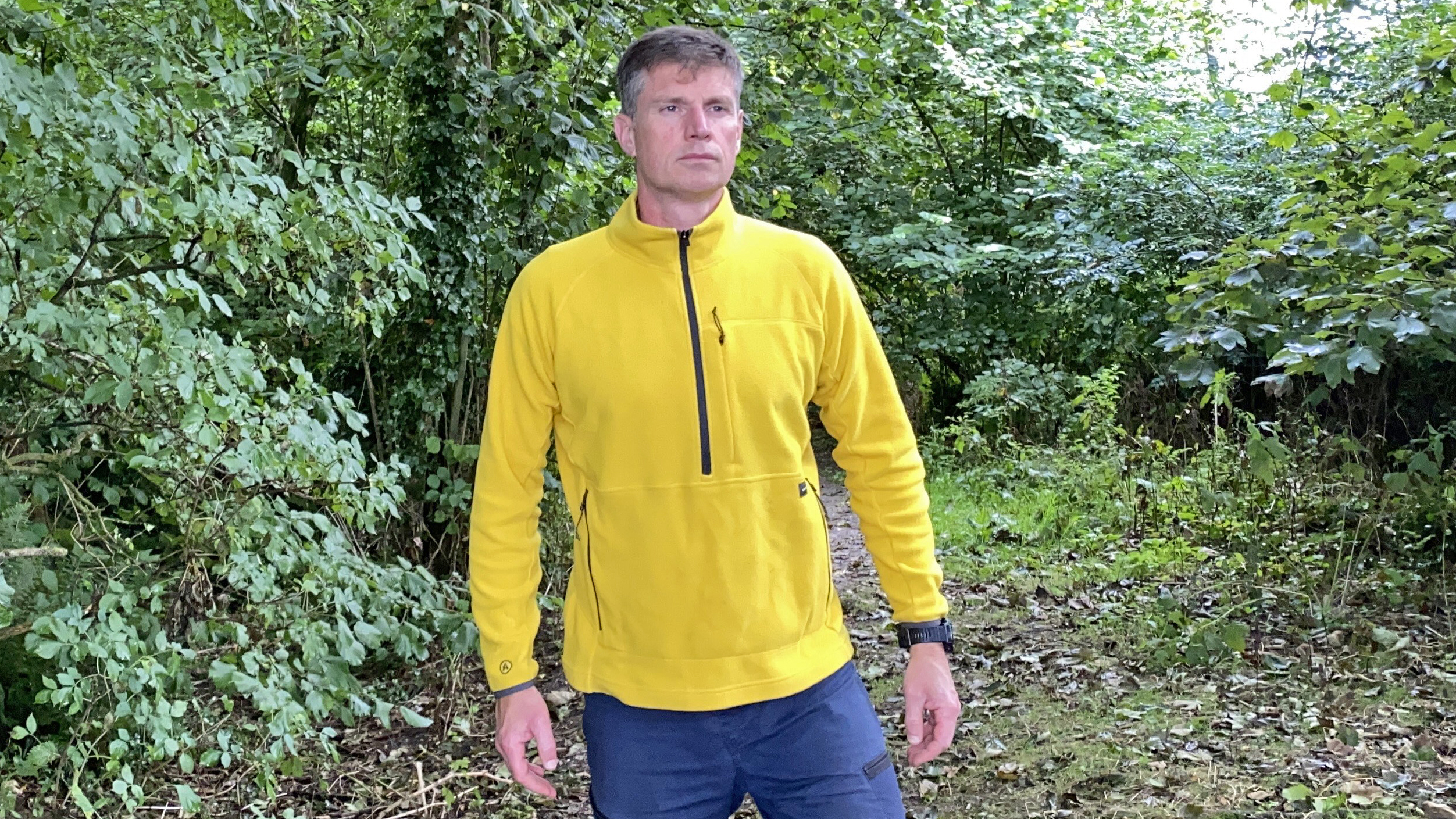
Pat has hiked all over the world, his adventures taking him to Mont Blanc, the roof of Western Europe; the Norwegian Alps; the highest peaks in Australia; and New Zealand’s Great Walks – among others. He’s an experienced tester of hiking kit and puts every jacket through its paces in a range of conditions before reviewing.
Smartwool Smartloft Jacket: on the trails and in the hills
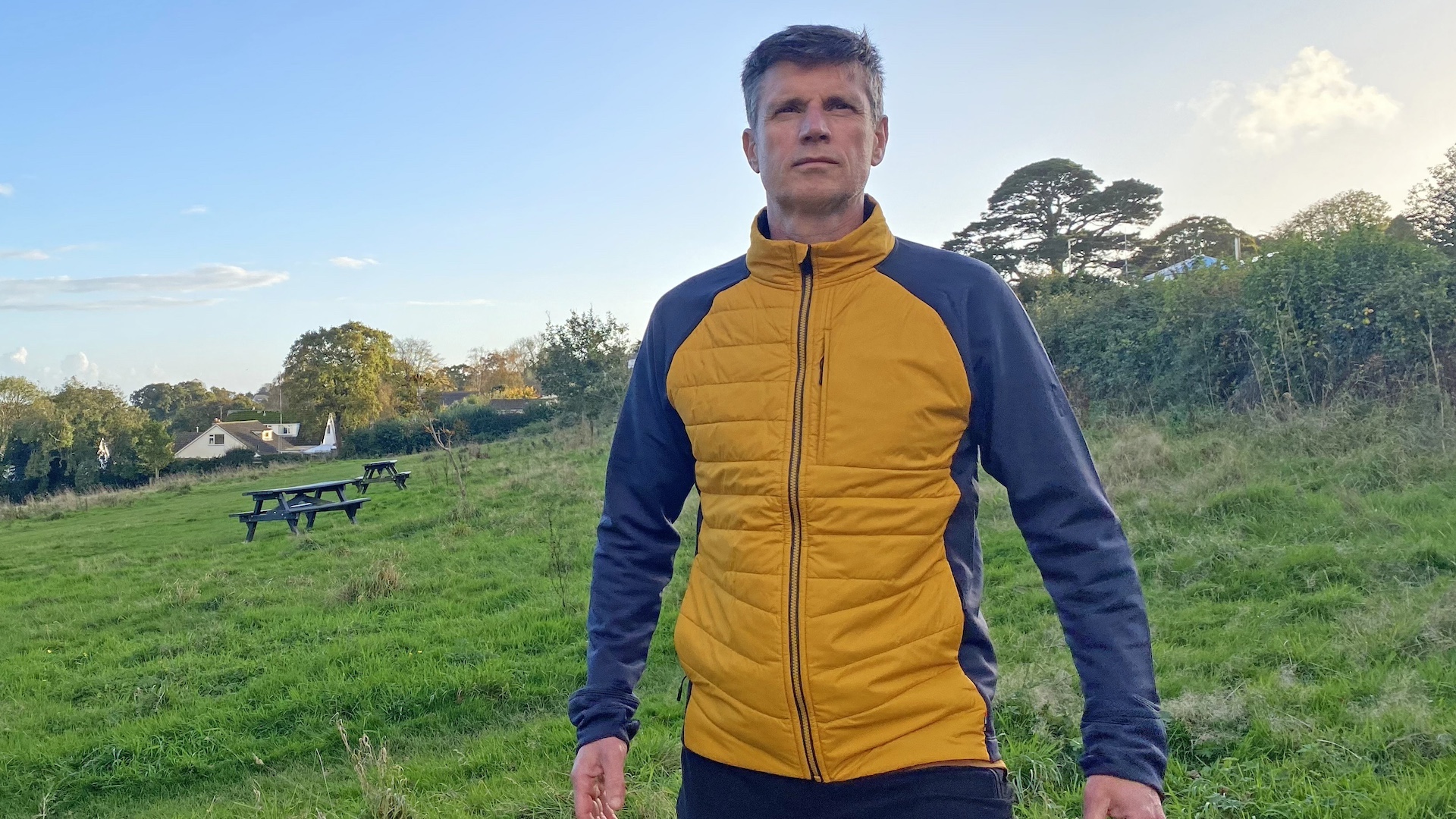
I’ve been wearing my Smartwool Smartloft Jacket while camping, traveling and hiking trails through hills, woodlands and along the coast for the last few months, during a period when temperatures have dropped significantly.
All the latest inspiration, tips and guides to help you plan your next Advnture!
I love Merino wool (who doesn’t?), for its wonderful next-to-skin softness and comfort, plus all the other performance points it brings to the party: excellent breathability, the ability to wick moisture away from the body and the fact it naturally deals with bacteria and doesn’t collect bad odors. One of the few downsides of the otherwise magic material is its lack of durability, but this has been countered in the Smartloft Jacket with the inclusion of tough-stuff polyester and elastane (although sadly these ingredients aren’t recycled). The relatively large amount of elastane in the sleeves, back and side panel gives the garment plenty of dynamic stretch, which I really appreciated while clambering and scrambling around crags and rocky peaks, reaching for hand holds.
But we’ve seen all this before in other Smartwool tops – the really innovative element of this jacket is the use of wool as insulation in the puffy panels on the front and neck. The stitched baffles keep this fluffy fill firmly in place, and the wool has a decent amount of loft, providing real thermal protection for your front – not quite as much as top-quality duck or goose down, but very good nonetheless, and there are far fewer ethical issues involved (not least because more than half of the wool fill is recycled). Most importantly, wool can absorb large amounts of moisture and still keep you warm, and while the shell it sits behind in the Smartloft Jacket does repel small amounts of moisture (mist and light rain) this feature has proved very useful on chilly wet days when I’ve been caught outside without a proper waterproof shell.

That said, the puffy part of this jacket only covers your front. This means your back and sides, around your kidneys, can get a bit cold. To be fair, this was rarely a problem when hiking (except when I was being chased by a freezing tailwind) and climbing, when having truly breathable and stretchy back panels is much more of an asset. And it was actually a real bonus when I was carrying a backpack while wearing the jacket, because it meant I had a much less sweaty back.
But it can be an issue in camp. If you’re sat in a good camping chair with a decent backrest it’s fine, but if your back is exposed to the elements and you’re facing the fire, you can feel the chill a bit. Again, in fairness, this jacket is primarily intended for use during outdoor activities, when the intelligent zoning of the thermal puffy parts is perfect, so this isn’t really a criticism – you just need to stick an extra base layer or gilet on.
The non-puffy parts of the jacket do not have any real water repellency powers. Being made of wool and polyester, the jacket will retain most of its thermal properties when wet, but it does get heavy and less comfortable if subjected to a drenching. You could say this about almost all fleeces, of course, so it’s not necessarily a downside, but it is less wet-weatherproof than most softshells and this is something you need to be aware of (pack waterproof and windproof layers accordingly, so you can layer up if the weather turns ugly). I do like the fact that the puffy part extends across the back of my head, though, and the jacket zips up nice and high, so my neck has been kept beautifully warm.
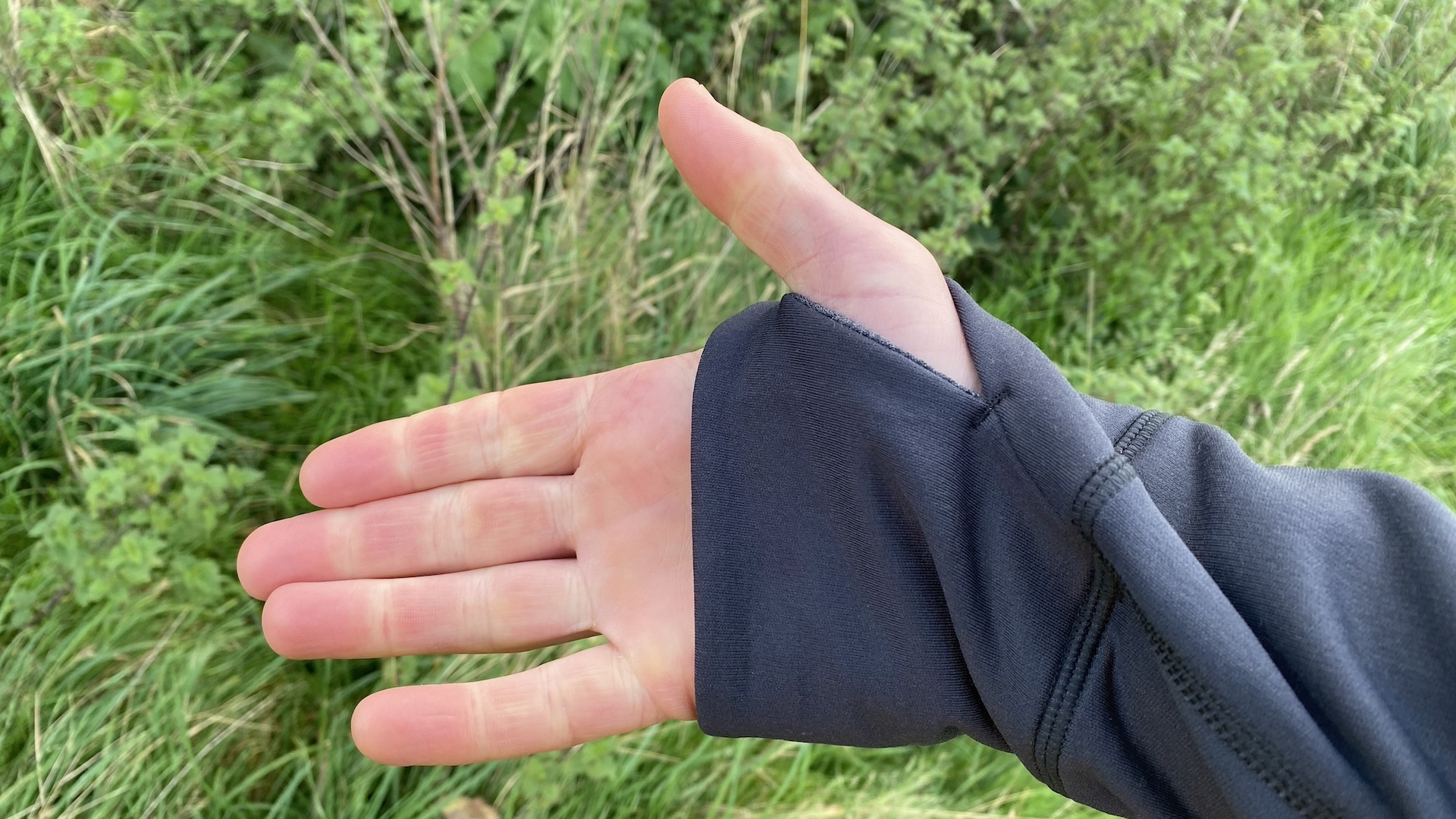
In terms of the rest of the design, the Smartloft Jacket is exceptionally well made, with an excellent chunky main zip that will last forever, and three good zipped pockets: a pair of hand pockets, and a vertical one on the left chest. Inside, there are two capacious pouches that can be used to hold sheet maps or other items. I’m always happy to see thumb loops on a mid layer (a small but important feature in my opinion, not just to keep sleeves in place when you pull on a shell layer, but also to keep coverage complete when you’re wearing hiking gloves) and this jacket has excellent, strong thumb loops.
It’s a small point, but there is no way of tightening the hem around your waist, which can be a good way stopping a top from riding up above your hiking pants when wearing a pack, but thanks to the elastane, the fit is pretty good and tight anyway.

Author of Caving, Canyoning, Coasteering…, a recently released book about all kinds of outdoor adventures around Britain, Pat has spent 20 years pursuing stories involving boots, bikes, boats, beers and bruises. En route he’s canoed Canada’s Yukon River, climbed Mont Blanc and Kilimanjaro, skied and mountain biked through the Norwegian Alps, run an ultra across the roof of Mauritius, and set short-lived records for trail-running Australia’s highest peaks and New Zealand’s Great Walks. He’s authored walking guides to Devon and Dorset, and once wrote a whole book about Toilets for Lonely Planet. Follow Pat’s escapades on Strava here and Instagram here.
